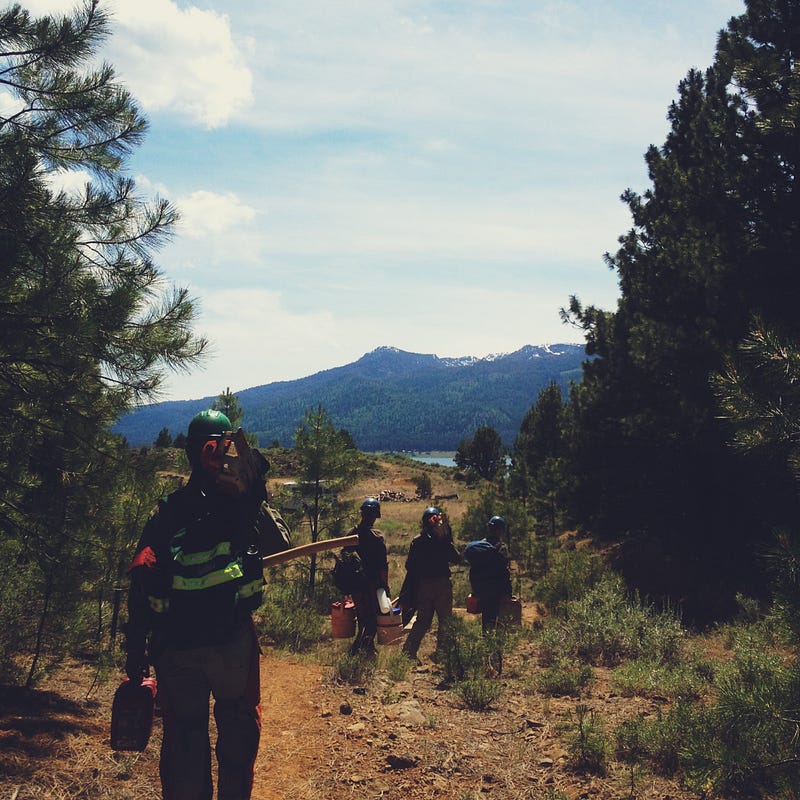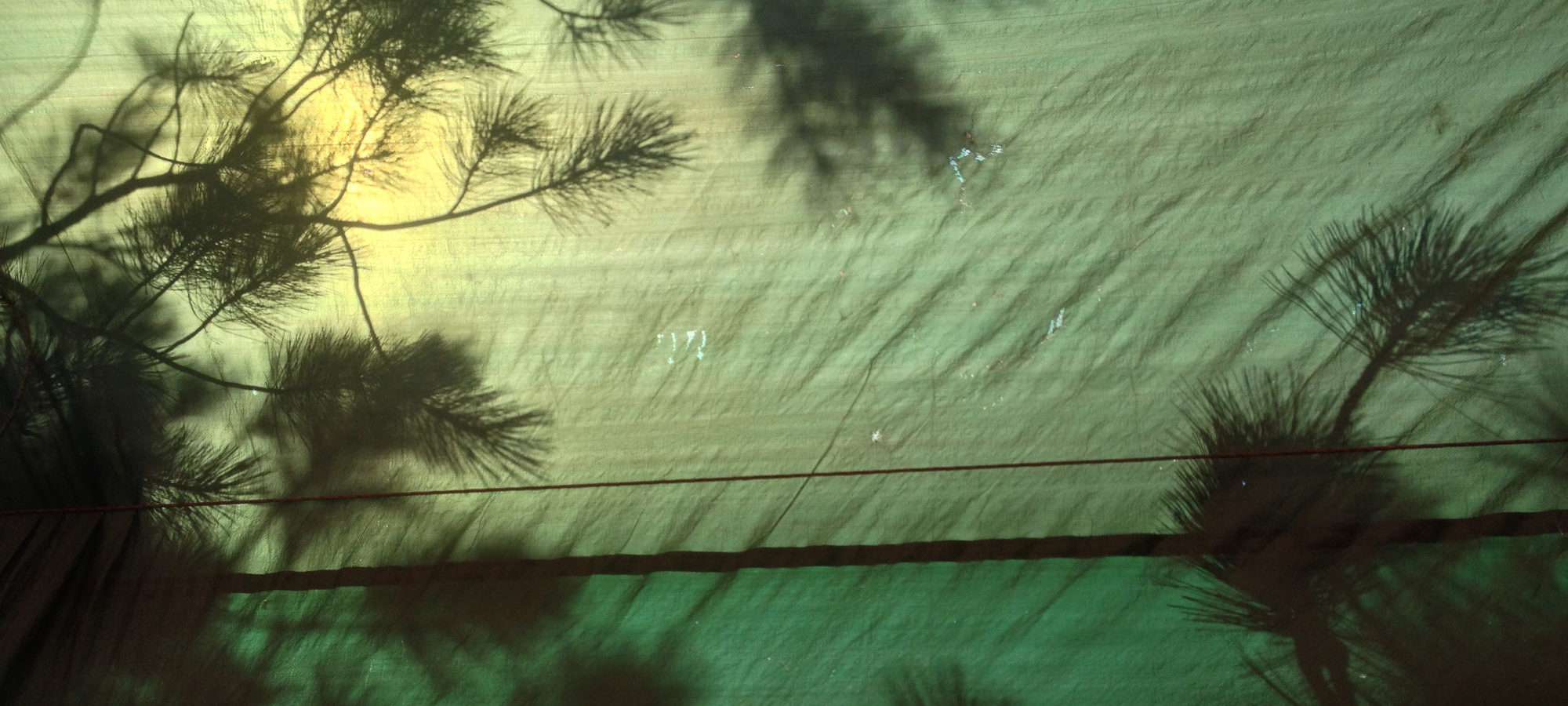Story originally written as part of an Americorps service term.
I rode in a white Chevy short-bus printed with northwestyouthcorps.org on the side. It rattled down the desert highway past sullen landscapes that flickered in the window like old movie projections. The dull road roared outside — punctuated only by pinching squeaks from the center console. There was no radio. There was no speaker. There was just an empty hole towards the front where I presume the music would have come from. We were four guys with one leader, drafted together the night before and put into this bus with a trailer in tow. Our trailer predicated the next eight weeks with chainsaws, hard-hats, and tents stowed away under tarps and backpacks.
I sat, staring dazed, wondering how I had wound up on the crew driving twelve hours from Oregon into Idaho. There were three other crews dispersed up and down the Pacific Northwest coast, yet we drove east. Inland. where the hours slowly melted with the sun-baked miles of pavement. We were destined to be sawing in a stand of trees to reduce fire fuels. We would work for four rotations of ten day hitches with four days off between each hitch. I panicked cooly about an endless summer of chainsawing. My mouth was shut and my eyes with a stone gaze through the western countryside. There was no relocation. There were no new projects to lend tangible milestones. There was just a developed RV camp filled with white rectangle homes on wheels and the same forest to hold us captive. I had romanticized being in the northwest on a conservation crew with dreams of the deep wilderness and living on trails, but my idealized expectation couldn’t get me much further than stumbling over the same thought of if I had made a terrible mistake.
Day one came after two days of lugging the bus across state. We walked to the site of our project. Gnarled thickets and overgrowth nestled our understanding of this wooded space. We were set forth to clear it out, or “reduce the fuels.” Do what a small forest fire might have done 100 years ago if we had not been suppressing them this whole time. As the first round of ten work days commenced, it became what I could only describe as this, which scribbled in my sketchbook under headlamp one night:
The fragrance of dying ponderosa wafts with each swift sever of the saw. Oil, gas, and grit chew our hands and our lungs and our eyes. Pine pitch seeps into the threads of our wear. Spikes of enormous Hawthorne plants find their repeated way through the palms of our gloves only to leave their tip like fragile knife embedded in our hands. We take life from this forest one shrub and malnourished tree at a time. We favor the greats. The tallest, the strongest, and the thickest survive, but who knows what they think of us. Buzzing fury day in and day out. We hope, but we have no guarantee…is it worth it?

So it went, slowly, with a foot in front of the other. I began to see that there was indeed worth to this experience. Somewhere between our mountainside viewing of fireworks overlooking Hailey, Idaho or waking up with the sun on a knob in the Payette National Forest, my perspective changed. Wood chips and spider webs glinted in the sunlight descending through the canopy. Bald eagles and osprey swept overhead. The beauty became inherent. I could trudge through the woods – saw in hand – on people trails or the secret game-trails of deer. We made our own trails of matted grass moving large logs back and forth, again and again. A doe and her fawns would visit or bound nearby. Space was redefined audibly and visibly. I could peer between trees and see 200 yards up a hill or straight through to the mountains in the west. Our calls and echoes matched with birds and relayed through the acoustics of the great wooden trunks. Wonder was everywhere.
What I came to look forward to and value each day was the opportunity for introspection. On one of our days off, we huddled in a coffee shop mostly silent filling our hungry thoughts with reading. I happened upon a New York Times article, which cited Science Magazine as conducting a study of people alone with just their thoughts. The article speculated that we fill our time with anything and everything so as to avoid being stuck with just ourselves. To ignore the hard things and distract our own realities. Music, movies, phones, flirtations, games, work – it is easy to lose yourself in the repetitious cycle of each. Everything jammed into our schedules to create a busy that diverts our attention from what we truly need...ourselves.

Well, when you rise each day to cut trees, pick up sticks and logs, clean your saw, and repeat all summer long, it is hard to avoid your own thoughts. Locked into your ear-budded hearing protection, the muffled world creates the perfect cerebral canvas to let your thoughts roam. I thought about the past the present, and beyond. I thought about ethics, morals, ideals, loved ones, friends, old projects, future projects, and of course…trees. It was a prolonged meditation with trees for over eight weeks. So full of wisdom, these towering giants impressed me with their quiet regality. Their sincerity. I have come to see their immense humility. All-giving, yet waiting for nothing in return. Content. They grow perfect in their own imperfections, just how nature wants them to. Ultimately, we all do. We blast onward as beautiful sparks, lit into this world for the same unknown reason as anybody else: to find joy and fulfillment in being ourselves, to thrive within the present, and love every brave, curious minute of being in search of this. I had the privilege of picking up wood and sticks all day, hefting a chainsaw for a summer. I found peace within the mundane, and grew beyond my discontent. The existence of trees put my days into perspective. I understood, more than ever, that we must spend our precious breaths and our precious thoughts wisely, in the right direction, onward and upward. Just like the trees.

No comments.